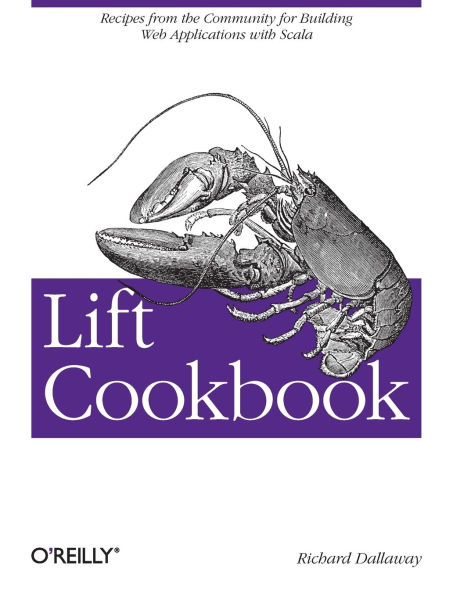Built on top of the Scala JVM programming language, Lift takes a different—yet ultimately easier—approach to development than MVC frameworks such as Rails. Each recipe in this book includes a discussion of how and why each solution works, not only to help you complete the task at hand, but also to illustrate how Lift works.
- Set up an environment and run your first Lift application
- Generate HTML, using Lift’s View First approach
- Submit forms and work with form elements
- Build REST web services with the framework’s RestHelper trait
- Take advantage of Lift’s support for Ajax and Comet
- Get examples for modifying Lift’s request pipeline
- Convert Scala classes into tables, rows, and columns in a relational database
- Send email, call URLs, and schedule tasks from your application
- Package and deploy your application to various hosted services
Built on top of the Scala JVM programming language, Lift takes a different—yet ultimately easier—approach to development than MVC frameworks such as Rails. Each recipe in this book includes a discussion of how and why each solution works, not only to help you complete the task at hand, but also to illustrate how Lift works.
- Set up an environment and run your first Lift application
- Generate HTML, using Lift’s View First approach
- Submit forms and work with form elements
- Build REST web services with the framework’s RestHelper trait
- Take advantage of Lift’s support for Ajax and Comet
- Get examples for modifying Lift’s request pipeline
- Convert Scala classes into tables, rows, and columns in a relational database
- Send email, call URLs, and schedule tasks from your application
- Package and deploy your application to various hosted services

Lift Cookbook: Recipes from the Community for Building Web Applications with Scala
253
Lift Cookbook: Recipes from the Community for Building Web Applications with Scala
253
Product Details
| ISBN-13: | 9781449362683 |
|---|---|
| Publisher: | O'Reilly Media, Incorporated |
| Publication date: | 07/05/2013 |
| Pages: | 253 |
| Product dimensions: | 7.00(w) x 9.10(h) x 0.70(d) |
